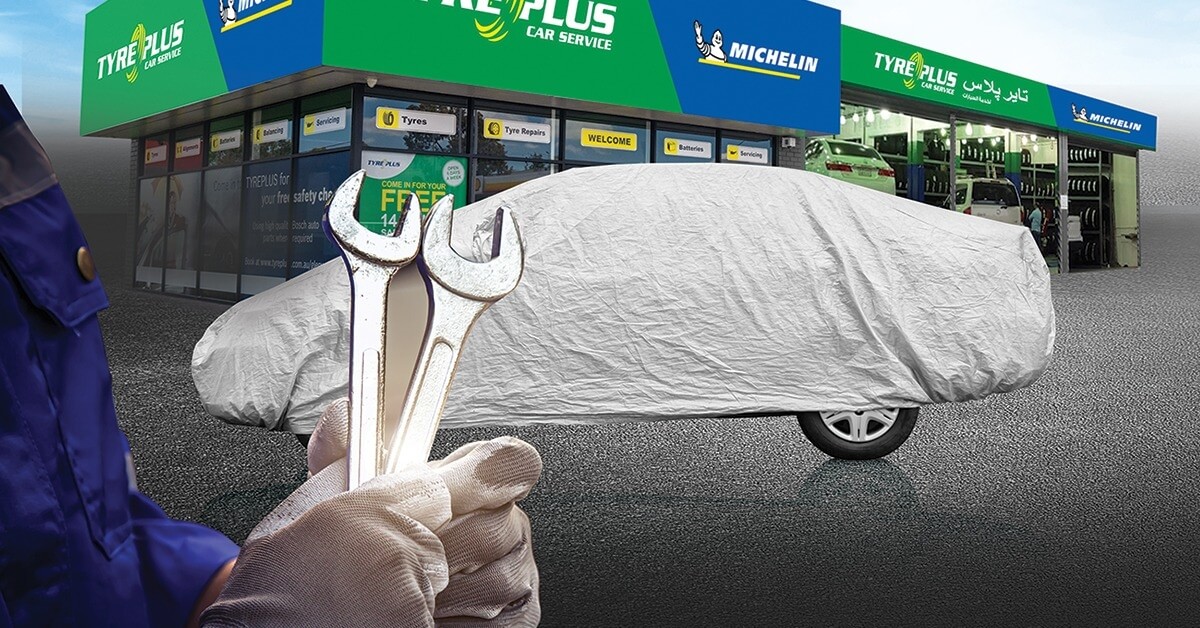Essential tips & tricks for Car Maintenance during long-term storage
Preserving Your Vehicle's Life: Tips for Long-Term Car Storage

Find your tyre
READ THE DIMENSIONS OF TYRES

Keeping a car in storage for an extended period requires proper care and maintenance to ensure it remains in a running position. Whether you're going on a vacation, deploying overseas, or simply have an extra vehicle you won't be using for a while, it's crucial to follow the right steps to preserve the condition and performance of your car. At TyrePlus, we understand the importance of properly storing your car when it's not in use for an extended period. In this comprehensive guide, we will provide you with expert advice on how to store your car to ensure its functionality and longevity.
In this blog, we will share expert tips and insights on storing your car for a long period, allowing you to keep it in a running position so that when you're ready to use it again, it's in optimal shape.
Preparing Your Car for Storage:
1. Clean and Detail Your Car:
Before placing your car in storage, it's essential to give it a thorough cleaning, both inside and out. This will help prevent any dirt, grime, or stains from causing damage and ensure that your car remains in good condition during its idle time. Pay attention to areas prone to corrosion, such as the undercarriage and wheel wells, and consider applying a protective coating or wax.
2. Change the Oil and Fluids:
Fresh oil and fluids are vital for the health of your vehicle's engine. By changing the oil, coolant, brake fluid, and other essential fluids, you remove contaminants and prevent any potential issues that may arise from old or degraded fluids. Ensure the fluids are at the recommended levels and replace any that are low or due for a change.
3. Fill Up the Fuel Tank:
A full tank of fuel minimizes the risk of condensation forming within the fuel system, which can lead to damage or corrosion. Add a fuel stabilizer to prevent the gasoline from deteriorating over time, and run the engine for a few minutes after adding the stabilizer to ensure it circulates through the system.
4. Remove the Battery or Use a Maintainer:
Disconnecting the car battery is a good practice to prevent it from draining during storage. If you choose to remove the battery, store it in a dry, cool place. Alternatively, you can use a battery maintainer or trickle charger to keep the battery charged while in storage.
5. Protect the Tyres:
Properly inflated tires help alleviate stress on the suspension and minimize the risk of flat spots developing over time. Inflate the tires to the recommended pressure and consider using tire cradles or placing the car on jack stands to take the weight off the tires.
6. Store in a Dry and Safe Location:
Finding a suitable storage location is crucial to protect your car from the elements and potential damage. Ideally, choose a clean, dry, and well-ventilated space, such as a garage or storage unit, to minimize the risk of moisture affecting the car's components.
Long-Term Storage Maintenance:
1. Regularly Start the Engine:
Even if your car is in storage, it's important to start the engine periodically to keep it in running condition. Aim to start the engine every few weeks and let it run for at least 10 minutes to circulate fluids and prevent seals from drying out. However, avoid excessive idling, as this can lead to other issues.
2. Drive the Car Occasionally:
In addition to starting the engine, taking your car for a short drive every few weeks can help maintain its overall performance. Driving allows the transmission, brakes, and other components to remain lubricated and prevents them from seizing up due to extended inactivity.
3. Keep the Car Covered:
Using a breathable car cover helps protect your vehicle's paint and interior from dust, UV rays, and potential scratches. Ensure the cover fits well and doesn't trap moisture, as this can encourage the growth of mold or mildew.
4. Maintain a Moisture-Free Environment:
Moisture is the enemy when storing a car for a long period. Use moisture-absorbing products, such as desiccant bags or silica gel packs, inside the cabin and trunk to eliminate excess moisture. Consider using a dehumidifier or moisture-absorbing pellets in the storage area.
5. Inspect and Lubricate Moving Parts:
Periodically inspect all moving parts, including door hinges, trunk latches, and locks. Applying a light lubricant can help prevent rust and ensure smooth operation when you're ready to use the car.
Preparing for Bringing the Car Back into Use
When it's time to retrieve your car from storage and bring it back into use, it's crucial to ensure a smooth transition. Follow these steps to get your vehicle ready for the road, again.
1. Inspect and Clean
Perform a thorough inspection of your car to identify any issues that may have developed during storage. Check for signs of leaks, rodent damage, or flat spots on the tires. Clean your vehicle inside and out before taking it out for a drive.
2. Inflate Tyres and Check Fluids
Check the tire pressure and inflate as necessary. Inspect all fluid levels, including oil, coolant, transmission fluid, and brake fluid, and top them up as needed. If any fluids appear discolored or contaminated, it may be best to replace them.
3. Reconnect or Recharge the Battery
If you disconnected the battery during storage, reconnect it and ensure it's securely fastened. If you used a battery charger or maintainer, disconnect it and start your car. Allow the engine to idle for a few minutes to ensure everything is functioning correctly.
4. Start the car:
Turn the key and allow the engine to run for a few minutes to circulate oil and warm up before driving.
5. Observe and listen:
Pay attention to any abnormal sounds, vibrations, or warning lights that may indicate underlying issues. If you notice anything unusual, have your vehicle inspected by a qualified mechanic.
By following these expert tips, you can safely store your car for an extended period while keeping it in a running position. Proper preparation, regular maintenance, and choosing an appropriate storage location are key to preserving the condition and performance of your vehicle. Remember to clean and detail your car, change the oil and fluids, fill up the fuel tank, and protect the tires before storage. During the storage period, start the engine regularly, drive the car occasionally, keep it covered, maintain a moisture-free environment, and inspect and lubricate moving parts. With these measures in place, you can confidently store your car, knowing that it will be in great shape when you're ready to hit the road again.
